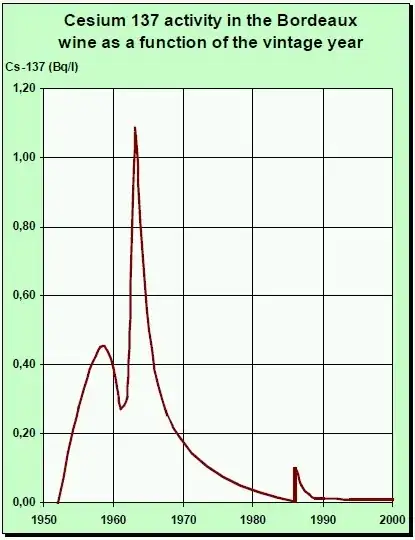In the White Collar TV Episode Bottlenecked it was claimed that a test of all vintage wines bottled before the ABomb would not contain any Cesium-137 but wine bottled in the years since all contain detectable amounts of Cesium-137.
A search shows this could be plausible. But none of the sites I have found that explore this trope cite any reputable references for there claims of true. I can understand that if it is present that then you can say that the wine is not pre 1940's but is there any proof that the Cesium shows up in all wine bottled since?
The EPA site says that:
Cesium-137 in the environment came from a variety of sources. The largest single source was fallout from atmospheric nuclear weapons tests in the 1950s and 1960s, which dispersed and deposited cesium-137 world-wide. However much of the cesium-137 from testing has now decayed.
So is it possible that a bottle of wine bottled since 1950 would pass a Cesium-137 test?
